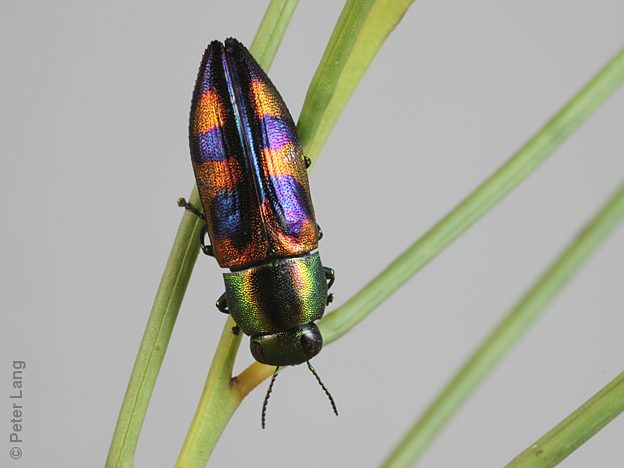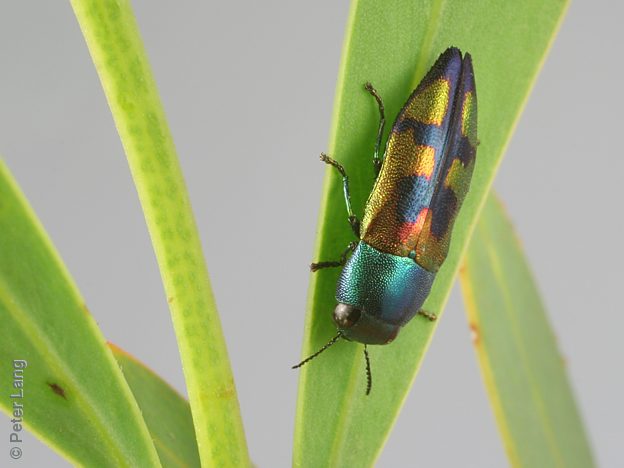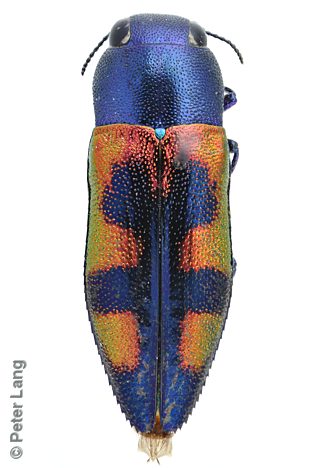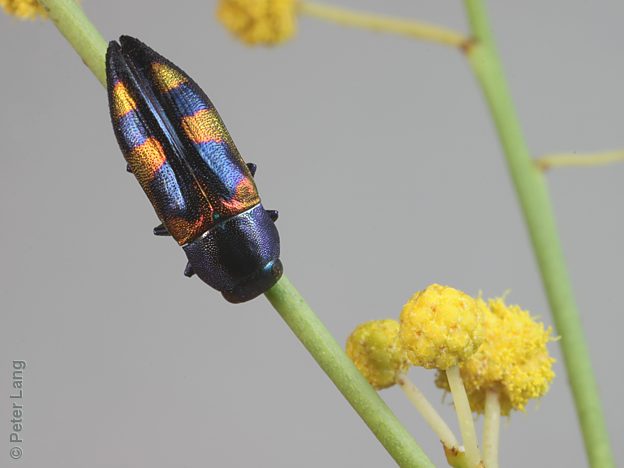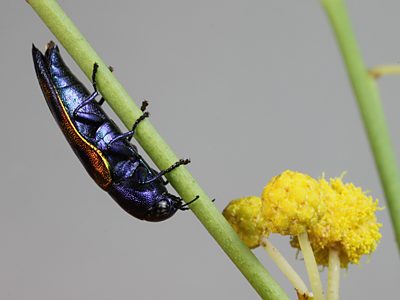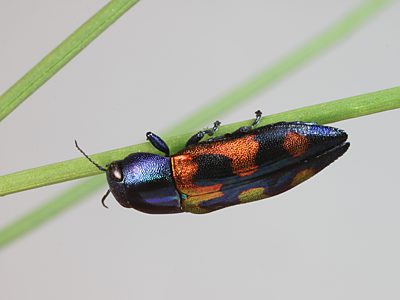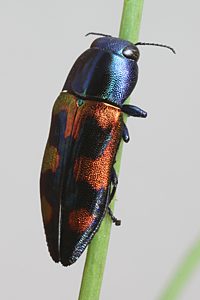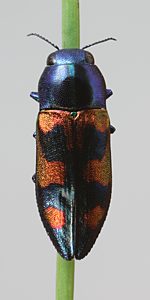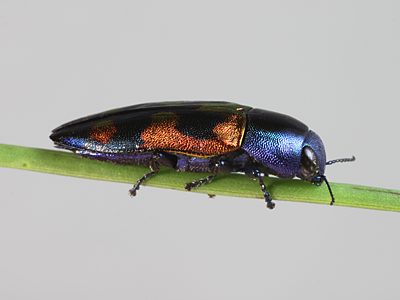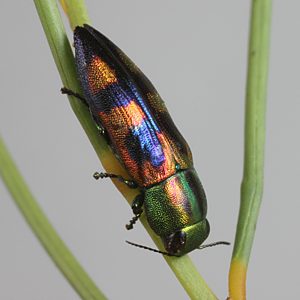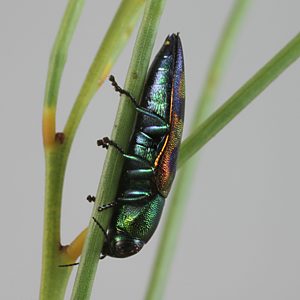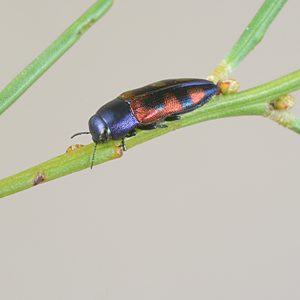Larger on average than Melobasis gratiosissima and with head and pronotum differently coloured to elytra, often blue, sometimes green or gold (golden-green in protologue), and with more extensive dark fasciae on the elytra.
Closely related to Melobasis gratiosissima (q.v.) and placed as a synonym under that species by Carter 1909. Emerges earlier than M. gratiosissma and is generally collected in spring (rather than summer like M. gratiosissima).
The taxonomic status of M. speciosa needs further investigation, as M. gratiosissma and M. speciosa are highly variable in size and colouration patterns. This is illustrated by the fact that Obenberger 1942 described three new varieties of M. gratiosissima, all from the same location, interpreted to be Gawler, SA (although given as 'New South Wales: Gowlerstown (Odewahn)').
Blackburn described the underside of M. speciosa as blue, but Obenberger's key gives it as green or green-gold, and has typical M. gratiosissima keyed in a group of varieties that are very blue underneath.
| Legend | records | count of breeding adults, pupae and larvae |
| sites | count of major sites (unique 10 km grid cells +/- some distinct approximate localities) |
| adult | live = extracted alive; dead = extracted dead as intact or fragmentary remains; ex billet = reared and emerged from stored sections of host; ex pupa = reared from sampled pupa |
| pupa | extracted pupa; pupa ex larva = reared pupa from larva |
| larva | extracted larva (any stage including prepupa) |
| gall (only) | hatched or unhatched gall identified by form and position rather than contents |
| Plant names in green are hyperlinked to a matching host species page with plant photos. |
| ¹ Legend | regions | SA State Herbarium regions (map)
EA: Eastern, EP: Eyre Peninsula, FR: Flinders Ranges, GT: Gairdner-Torrens, KI: Kangaroo Island, LE: Lake Eyre, MU: Murray, NL: Northern Lofty, NU: Nullarbor, NW: North-Western, SE: South-Eastern, SL: Southern Lofty, YP: Yorke Peninsula |
| size | The ellipse is the correct size when printed, indicative on a desktop screen, and likely to be wrong on a mobile device. |
